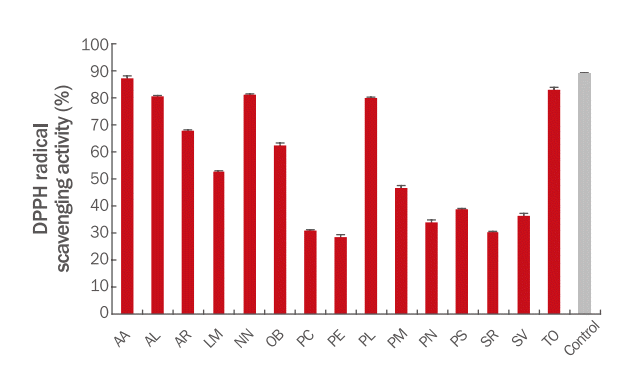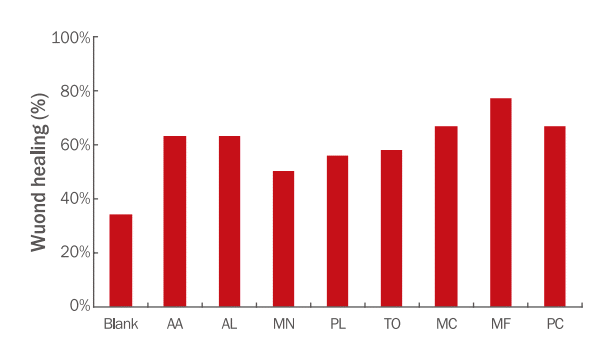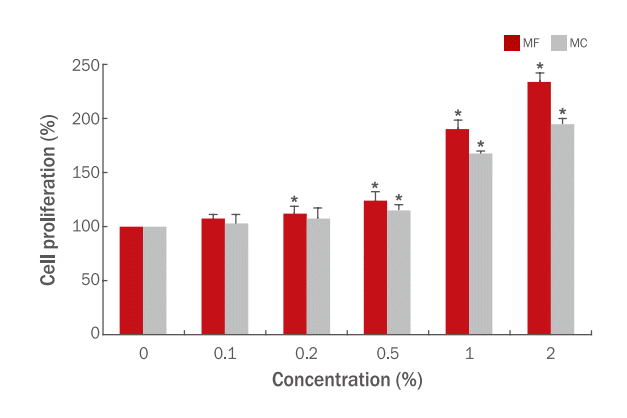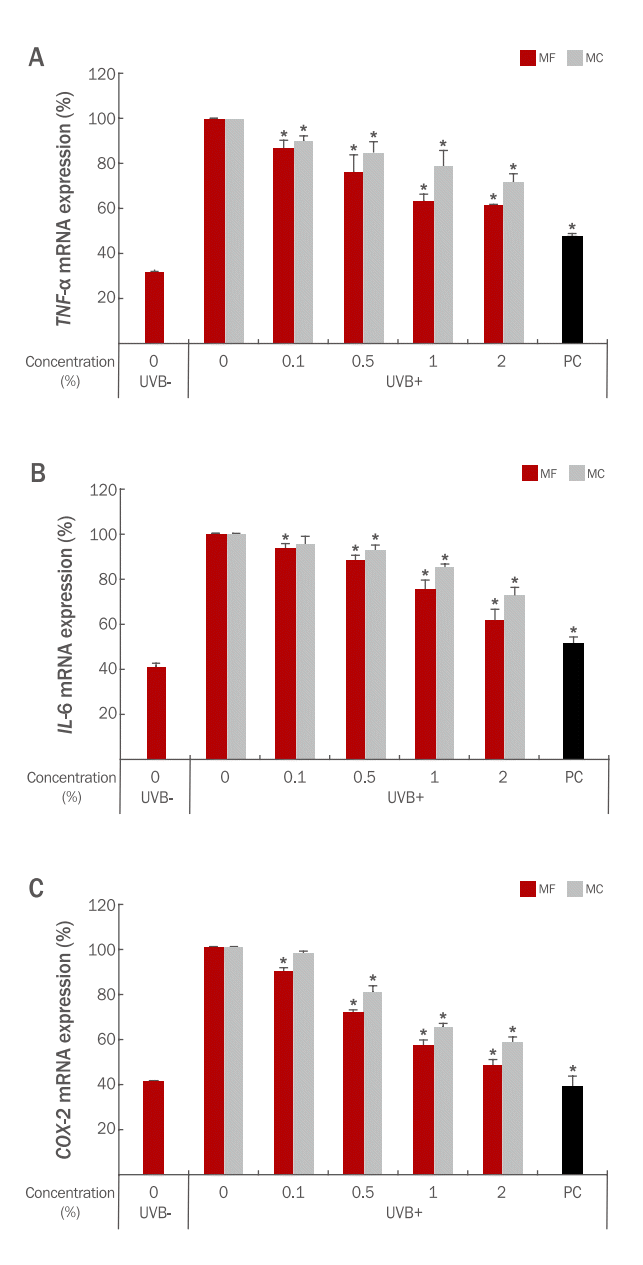Bark KM, Heo EP, Han KD, Kim MB, Lee ST, Gil EM, Kim TH. Evaluation of the phototoxic potential of plants used in oriental medicine.
Journal of Ethnopharmacology 127: 11-18. 2010.


Baylis D, Vartlett DB, Patel HP, Roberts HC. Understanding how we age: insights into inflammaging.
Longevity and Healthspan 2: 8. 2013.



Chiba K. Development of functional cosmetic ingredients using lactic acid bacteria in Japan.
Japanese Journal of Lactic Acid Bacteria 18: 105-112. 2007.

Choi JH, Song YS, Song K, Lee HJ, Hong JW, Kim v. Skin renewal activity of non-thermal plasma through the activation of β-catenin in keratinocytes.
Scientific Reports 7: 6146. 2017.



Choi MJ. Prunus persica L., Nelumbo nucifera, Hibiscus mutabilis L., Agastanche rugosa, Wolfiporia extensa extracts to improve skin wrinkles. Asian Journal of Beauty and Cosmetology 20: 11-19. 2022.
Di Napoli A, Zucchetti P. A comprehensive review of the benefits of Taraxacum officinale on human health. Bulletin of the National Research Centre 45: 110. 2021.
Ferracane R, Graziani G, Gallo M, Fogliano V, Ritieni A. Metabolic profile of the bioactive compounds of burdock (
Arctium lappa) seeds, roots and leaves.
Journal of Pharmaceutical and Biomedical Analysis 51: 399-404. 2010.


Helfrich YR, Sachs DL, Voorhees JJ. Overview of skin aging and photoaging.
Dermatology Nursing 20: 177-183. 2008.

Ho CY, Dreesen O. Faces of cellular senescence in skin aging.
Mechanisms of Ageing and Development 198: 111525. 2021.


Hsu MF, Chiang BH. Effect of
Bacillus subtilis natto-fermented
Radix astragali on collagen production in human skin fibroblasts.
Process Biochemistry 44: 83-90. 2009.

Hussain A, Bose S, Wang JH, Yadav MK, Mahajan GB, Kim H. Fermentation, a feasible strategy for enhancing bioactivity of herbal medicines.
Food Research International 81: 1-16. 2016.

Kim CH. Development of cosmetic raw material using fermentation and bio-conversion technology. News & Information for Chemical Engineers 29: 42-48. 2011.
Kim HW, Kim DS, Sung NY, Han IJ, Lee BS, Park SY, Eom J, Suh JY, Park J, Yu AR, et al. Development of functional cosmetic material using a combination of
Hippophae rhamnoides fruit,
Rubus fruticosus leaf and
Perillae folium leaf extracts.
Asian Journal of Beauty and Cosmetology 17: 477-488. 2019.

Lee S, An H, Kim W, Lu X, Jeon H, Park HW, Ha J, Cho J. Antiaging effect of mixed extract from medicinal herbs.
Asian Journal of Beauty and Cosmetology 19: 679-692. 2021.

Luo Q, Hao J, Yang Y, Yi H. Herbalogical textual research on “Gegen”.
China Journal of Chinese Materia Medica 32: 1141-1144. 2007.

Moon JS, Lee JH, Kim YB. Study of antioxidation activity and melanocyte effect of Pueraria lobata root extract. Journal of the Korean Applied Science and Technology 34: 418-425. 2017.
Mosmann T. Rapid colorimetric assay for cellular growth and survival: application to proliferation and cytotoxicity assays.
Journal of Immunological Methods 65: 55-63. 1983.


Papakonstantinou E, Roth M, Karakiulakis G. Hyaluronic acid: a key molecule in skin aging.
Dermato-Endocrinology 4: 253-258. 2012.



Petkova N, Hambarlyiska I, Tumbarski Y, Vrancheva R, Raeva M, Ivanov I. Phytochemical composition and antimicrobial properties of burdock (
Arctium lappa L.) roots extracts.
Biointerface Research in Applied Chemistry 12: 2826-2842. 2022.

Predes FS, Ruiz AL, Carvalho JE, Foglio MA, Dolder H. Antioxidative and
in vitro antiproliferative activity of
Arctium lappa root extracts.
BMC Complementary and Alternative Medicine 11: 25. 2011.



Ricard-Blum S. v.
Cold Spring Harbor Perspectives in Biology 3: a004978. 2011.



Shim SY, Park WS, Shin HS, OK M, Cho YS, Ahn HY. Physicochemical properties and biological activities of Angelica gigas fermented by Saccharomyces cerevisiae. Journal of Life Science 29: 1136-1143. 2019.
Shim JH. Anti-aging effect of ganoderol A in UVA-irradiated normal human epidermal keratinocytes.
Asian Journal of Beauty and Cosmetology 19: 57-64. 2021.

Sivamaruthi BS, Chaiyasut C, Kesika P. Cosmeceutical importance of fermented plant extracts: a short review.
International Journal of Applied Pharmaceutics 10: 31-34. 2018.

Sruthi A, Seeja TP, Aneena ER, Berin P, Deepu M. Insights into the composition of lotus rhizome. Journal of Pharmacognosy and Phytochemistry 8: 3550-3555. 2019.
Um JN, Min JW, Joo KS, Kang HC. Antioxidant, anti-wrinkle activity and whitening effect of fermented mixture extracts of
Angelica gigas,
Paeonia lactiflora,
Rehmannia chinensis and
Cnidium officinale.
Korean Journal of Medicinal Crop Science 25: 152-159. 2017.

Wang GH, Chen CY, Lin CP, Huang CL, Lin CH, Cheng CY, Chung YC. Tyrosinase inhibitory and antioxidant activities of three
Bifidobacterium bifidum-fermented herb extracts.
Industrial Crops and Products 89: 376-382. 2016.

Wang Z, Cai J, Fu Q, Cheng L, Wu L, Zhang W, Zhang Y, Jin Y, Zhang C. Anti-inflammatory activities of compounds isolated from the rhizome of
Anemarrhena asphodelioides.
Molecules 23: 2631. 2018.



Wong KH, Li GQ, Li KM, Razmovski-Naumovski V, Chan K. Kudzu root: traditional uses and potential medicinal benefits in diabetes and cardiovascular disease.
Journal of Ethnopharmacology 134: 584-607. 2011.


Yue B. Biology of the extracellular matrix: an overview. Journal of Glaucoma 23: 520-523. 2014.
Zhang Z, Oh DS, Lee MS. The influence of Pueraria Lobata root extract upon anti-oxidant activity. Journal of The Korean Society of Cosmetology 24: 1098-1105. 2018.







